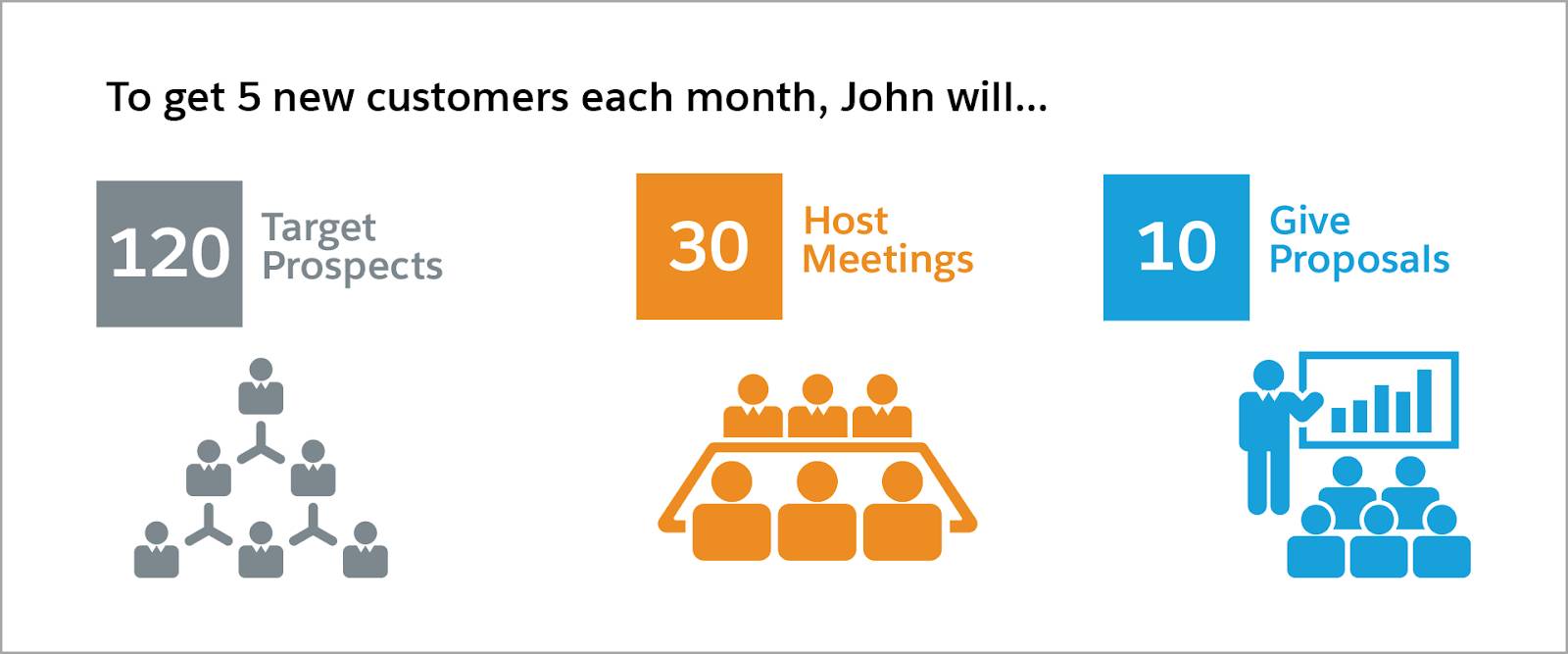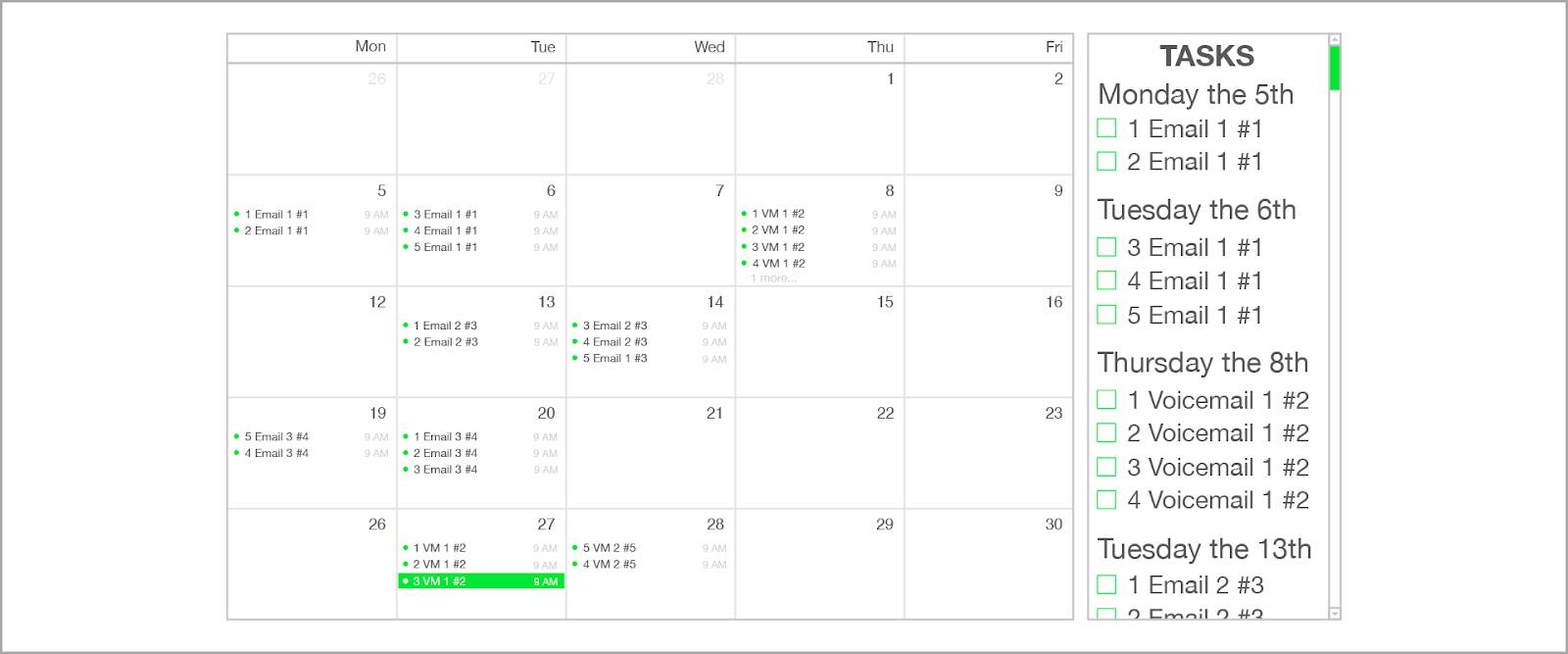Set Your Goals
Learning Objectives
After completing this unit, you’ll be able to:
- Define what SMART goals are.
- Explain how to use your calendar for successful prospecting.
- List some effective daily prospecting practices.
Establish SMART Goals
Consider two people: One decides that they are going to start exercising, and another decides to run a marathon next March 27. Who do you think is going to achieve their goal? The person who is going to run the marathon, right? Deciding to run a marathon on a specific date is a perfect example of a SMART goal.
SMART goals are:
- Specific—It’s clearly defined.
- Measurable—It’s clearly quantifiable.
- Achievable—It’s something you have the ability to do.
- Realistic—It’s possible to achieve this goal with all your other responsibilities.
- Time–bound—It’ll be accomplished within a defined amount of time.

With this in mind, a SMART prospecting goal would be: Make X number of prospecting activities each month. How many activities depends on lots of factors. Here’s how to come up with your goal number.
Double Your Quota and Know Your Ratios
To illustrate how to come up with your prospecting goal, let’s use an example. Meet John and Pooja. John is a sales professional who wants to meet quota. Pooja, his manager, informs him that his quota for this year is $600,000. To provide some margin of error, John doubles his quota. As they say, shoot for the moon; if you miss, you’ll land among the stars. You may consider doubling or adding on some extra as seems realistic for your situation.
For John to hit $1,200,000, he needs a plan. To build out the plan, John asks Pooja for the average deal size—which is $20,000—and average conversion ratios. The conversion ratios tell him:
- One out of four prospecting activities will lead to a qualified meeting.
- One out of three qualified meetings will request a proposal.
- One out of two proposals will become a customer.
John aims to do $100,000 of business per month to hit his doubled yearly quota. He has to acquire five new customers every month: $20,000 × 5 = $100,000. Since John knows his conversion ratios, he can plan out how many prospects he will target each month to reach his quota.
To get five new customers, John will:
- Provide 10 proposals.
- Hold 30 meetings.
- Prospect to 120 people each month.

For each prospect, John plans a contact strategy that includes five points of contact. All told, John is looking at 600 points of contact targeted at 120 prospects each month to achieve his goal. John now has a SMART goal he can set out to achieve.
If John doesn’t have enough tier 1 accounts, he can fill out his prospecting activities between tier 1 and tier 2 accounts to generate enough activity. You can do the same. Your actual numbers are going to depend on your role in the business and what you agree to with your manager.
Your conversion ratios will probably be different as well. We recommend you keep track of your own conversion ratios so you can plan, identify your challenge areas, and thoughtfully improve your sales practice.
Set Time on the Calendar
To make all of this happen, at the start of each month set time on the calendar specifically for prospecting. Plan out a strategy to stand apart from your competition with emails and voicemails, calling early or late, and incorporate the different attention-grabbers. You might try testing different subject lines or message content to see which gets the best response.
Create blocks of time for when you are going to send your emails and make phone calls. All together, you should have five to eight points of contact.

Daily Routine
Each morning, start early with some extra time on your calendar to take a look at your key prospects. Browse their social networks and the day’s news. Look out for any trigger events that you might be able to tie in to. Then get to work prospecting to build a huge sales funnel.
Now that you know the craft of prospecting, you can get started with building a rewarding sales career. Follow the discipline of setting SMART goals, set time on the calendar, and practice a daily routine to make it happen.
We are what we repeatedly do. Excellence then is not an act, but a habit.” –Aristotle